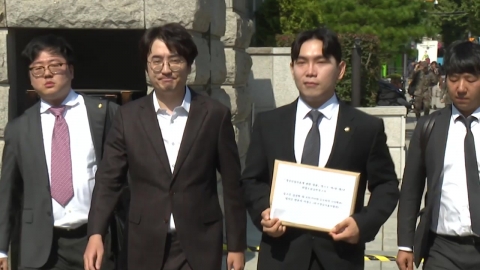It is expected that the effect of recovering domestic demand will be visible from the middle of next year due to the cut in the benchmark interest rate.
Some people say that the rate cut has been delayed at a time when there is no financial capacity due to a lack of tax revenue.
Reporter Oh In-seok on the report.
[Reporter]
Long-term high interest rates, which have been going on for more than three years, have been a factor limiting consumption and investment.
The retail sales index, a leading indicator of domestic demand, has declined for nine consecutive quarters, while the household surplus, which is household surplus, has declined for eight quarters, tightening spending capacity.
Monetary authorities also judged that the delayed recovery in domestic demand has increased uncertainty in the outlook for growth this year.
[Lee Chang-yong / Governor of the Bank of Korea: First of all, the need to ease the tightening by cutting interest rates has increased as inflation has strengthened monetary tightening in terms of real interest rates and uncertainties in growth prospects have increased.]
As working-class people suffer from a prolonged slump in domestic demand, Deputy Prime Minister for Economic Affairs Choi Sang-mok told parliamentary inspection that the domestic sector expects to recover next year from this year's.
If the loan interest rate is lowered by that much due to the cut of the benchmark interest rate by 0.25 percentage points, the annual interest burden on household loan borrowers is estimated to be reduced by about 3 trillion won.
The interest burden on self-employed people is expected to decrease by 1.7 trillion won.The
rate cut is expected to serve as a catalyst for reviving sluggish domestic demand throughout the year.
Experts predicted that private companies' facility investment, construction investment and retail sales would recover with a lag.
[Jung Kyu-chul / Head of KDI's Economic Outlook Office: I think this rate cut is a positive factor for domestic demand. The impact is usually visible after the second to third quarters after the interest rate cut, and considering this, the visible impact of the recovery of domestic demand is expected to be seen by the middle of next year.]
Some say that interest rates should have been cut quickly in response to the severe sluggish domestic demand.
In other words, the monetary tightening stance should have been changed earlier at a time when fiscal capacity has been reduced due to the lack of all-time tax revenues for the second year.
The rate was frozen in August, citing household debt, but concerns remain about household debt.
[Seok Byung-hoon / Professor of Economics at Ewha Womans University] I think he did a practical job. If household loan regulations are loosened early next year, demand will still exist and demand will explode, increasing household loans and raising housing prices in Seoul and the metropolitan area (We believe)
Governor Lee Chang-yong said it would be good to evaluate whether the base rate cut was realized after about a year.
This is YTN Oh In-seok.
※ 'Your report becomes news'
[Kakao Talk] YTN Search and Add Channel
[Phone] 02-398-8585
[Mail] social@ytn.co.kr
[Copyright holder (c) YTN Unauthorized reproduction, redistribution and use of AI data prohibited]
Economy
View the full list of articles- 'U-turn' from monetary tightening to easing for the first time in three years and two months
- When asked about Samsung's poor third quarter performance...Lee Jaeyong's "silent answer."
- "Rate cuts" are limited to stimulating housing prices...Loan regulation is key.
- 'U-turn' from monetary tightening to easing for the first time in three years and two months


![[Site Y] "Cold season, with hot energy"...Han So-hee's screen debut film 'Heavy Snow' (Roundup)](https://image.ytn.co.kr/general/jpg/2024/1011/202410111657387554_h.jpg)
![[Site Y] Director of "Heavy Snow" Han So-hee, who had attractive eyes..."No audition, no casting offer".](https://image.ytn.co.kr/general/jpg/2024/1011/202410111652148368_h.jpg)


![[After playing the game] Between "Soul-like" and "Action-like"...Which one?](https://image.ytn.co.kr/general/jpg/2024/1011/202410111054554736_h.jpg)
